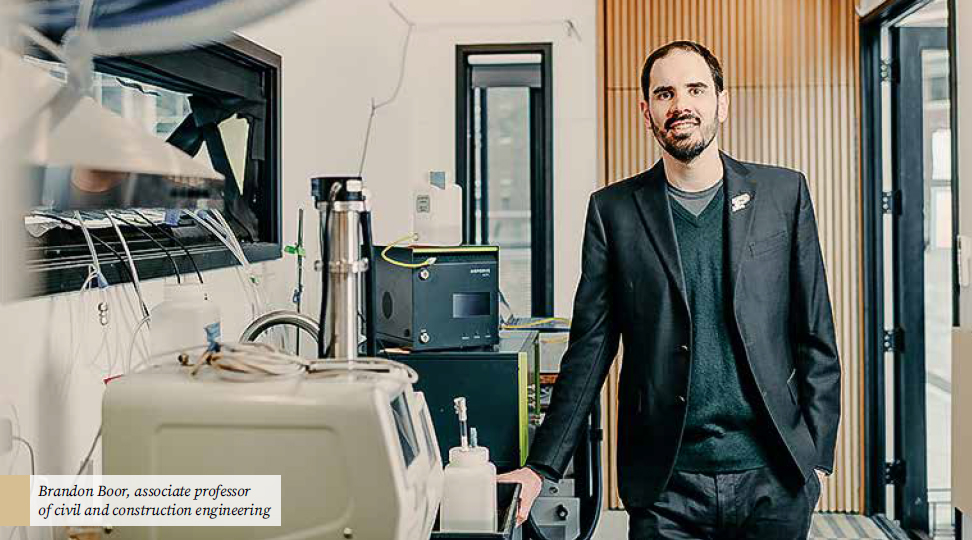Indoor Air Pollution

Study finds gas stoves emit more nano-sized particles than car exhaust
Cooking on your gas stove can emit more nano-sized particles into the air than vehicles that run on gas or diesel, possibly increasing your risk of developing asthma or other respiratory illnesses, a new Purdue University study has found.
“Combustion remains a source of air pollution across the world, both indoors and outdoors,” said Brandon Boor, associate professor of civil and construction engineering. “We found that cooking on your gas stove produces large amounts of small nanoparticles that get into your respiratory system and deposit efficiently.”
Boor’s study focused on tiny airborne nanoparticles, called nanocluster aerosols, that are only 1-3 nanometers in diameter — which is just the right size for reaching certain parts of the respiratory system and spreading to other organs.
“These super tiny nanoparticles are so small that you’re not able to see them. They’re not like dust particles that you would see floating in the air,” Boor said. “After observing such high concentrations of nanocluster aerosols during gas cooking, we can’t ignore these nano-sized particles anymore.”
High-resolution air quality data collected from state-of-the-art aerosol instruments allowed the researchers to compare their findings with known outdoor air pollution levels, which are more regulated and understood than indoor air pollution. They found that as many as 10 quadrillion nanocluster aerosol particles could be emitted per kilogram of cooking fuel — matching or exceeding those produced from vehicles with internal combustion engines. This would mean that adults and children could be breathing in 10-100 times more nanocluster aerosol particles from cooking on a gas stove indoors than they would from car exhaust while standing on a busy street.
“What we’ve learned is that models could not accurately capture the transformations of particles this small in size,” said PhD student Satya Patra, who collected data for this research at the school’s tiny house lab.
The models showed that nanocluster aerosol particles are very persistent in their journey from the gas stove to the rest of the house. Trillions of these particles were emitted within just 20 minutes of boiling water or making grilled cheese sandwiches or buttermilk pancakes on a gas stove.
Even though many particles rapidly diffused to other surfaces, the models indicated that approximately 10 billion to 1 trillion particles could deposit into an adult’s head airways and tracheobronchial region of the lungs. These doses, normalized by body weight, would be even higher for children — the smaller the human, the more concentrated the dose.
The nanocluster aerosols coming from gas combustion could easily mix with larger particles entering the air from butter, oil or whatever else is cooking on the gas stove, resulting in new particles with their own unique behaviors.
This study was supported by a National Science Foundation CAREER award to Boor. Additional financial support was provided by the Alfred P. Sloan Foundation’s Chemistry of Indoor Environments program through an interdisciplinary collaboration with Indiana University.
